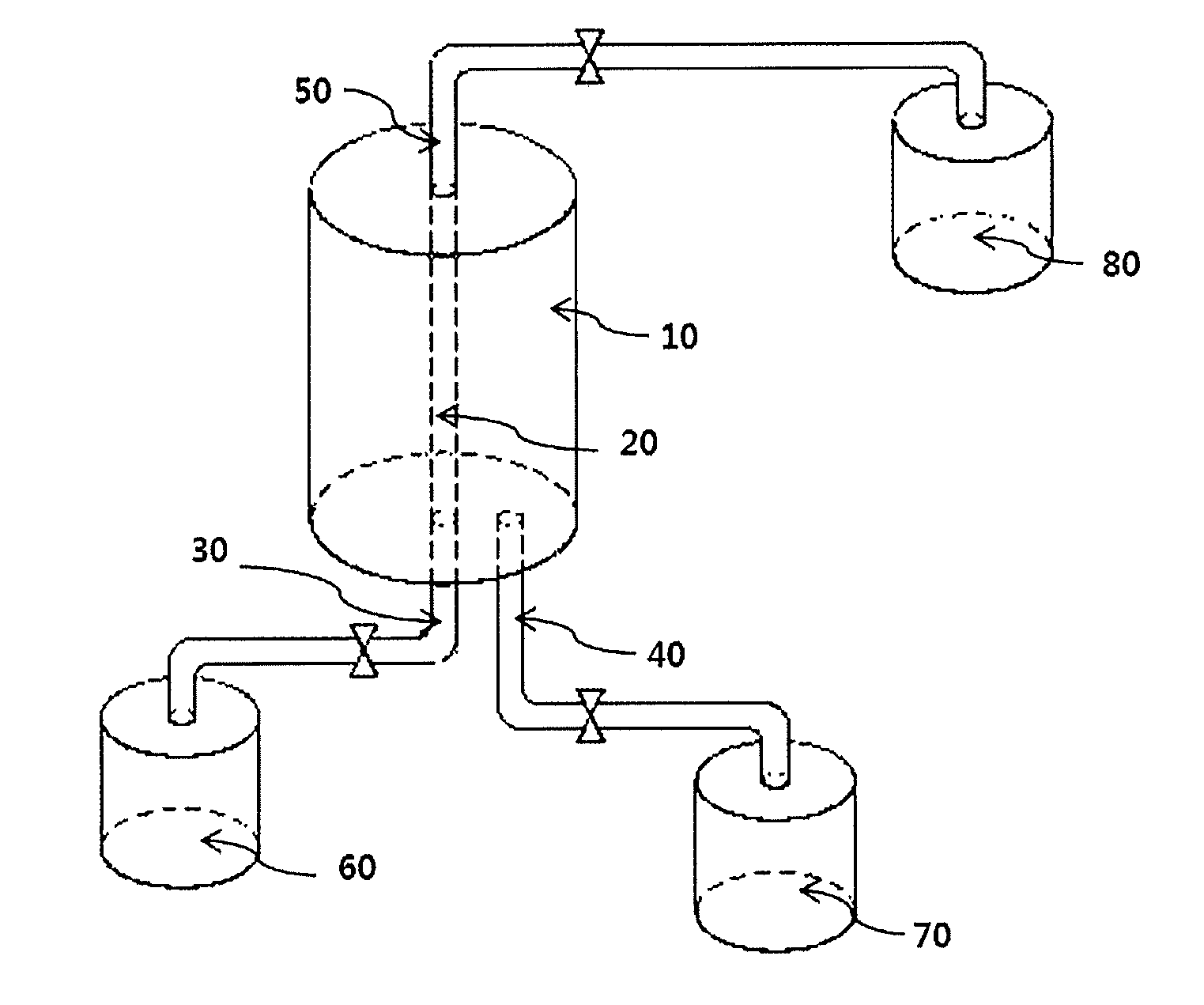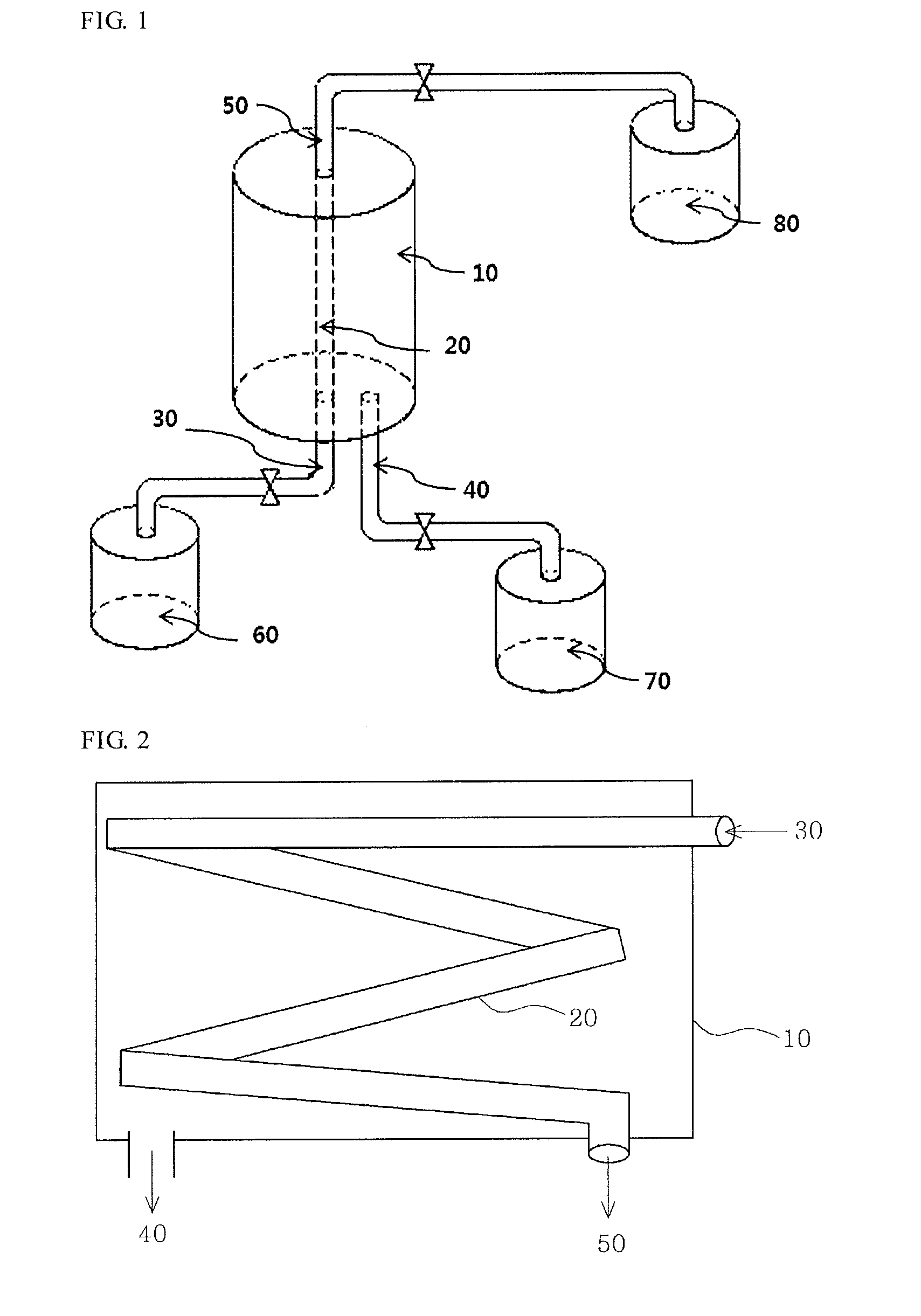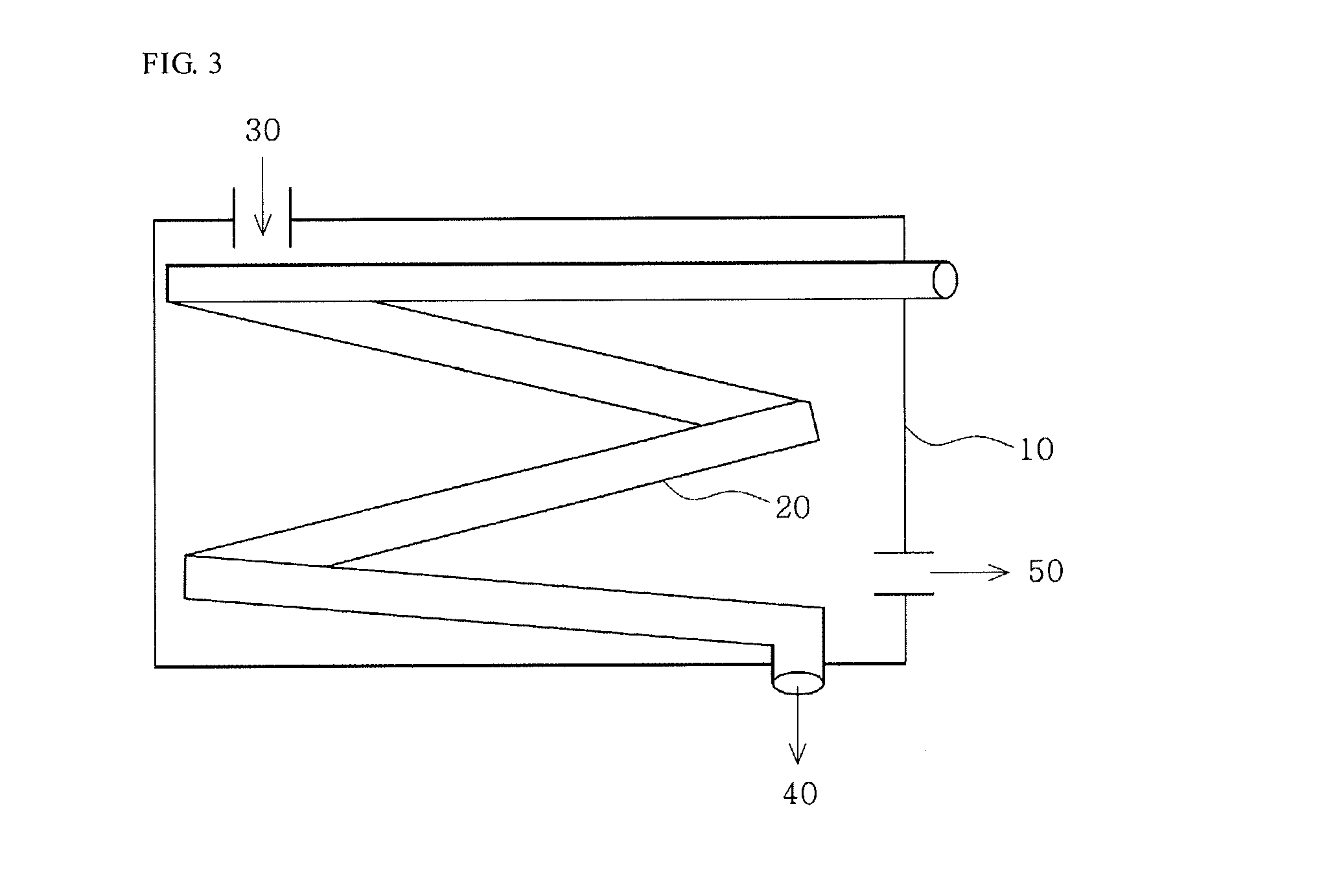Device for separating carbon dioxide using silicone separation film and method for manufacturing same
a technology of carbon dioxide and separation film, which is applied in the direction of separation process, dispersed particle separation, membrane separation, etc., can solve the problems of large impact on human social life, high energy consumption, and high cost, and achieves low pressure difference, high energy consumption, and simple method
- Summary
- Abstract
- Description
- Claims
- Application Information
AI Technical Summary
Benefits of technology
Problems solved by technology
Method used
Image
Examples
example 1
Experiment Conducted Using a Porous Silicone Tube as a Separator
[0079]A porous silicone tube having a thickness of 2 mm was installed as the porous silicone membrane 20 of FIG. 1, and a mixed gas containing 50% carbon dioxide and 50% nitrogen was used as a byproduct gas. The byproduct gas was injected into a reactor at a constant flow rate of 2.5 cc / sec using the MFC.
[0080]As the byproduct gas flowed at the constant flow rate, carbon dioxide permeated through the separator made of the silicon tube. As a result, a collection rate of carbon dioxide separated from the byproduct gas was 94%.
example 2
Experiment Conducted Using a Nanoceramic-Coated Porous silicone Tube as a Separation Membrane
[0081]After 0.5 g of nanoceramic was mixed with 100 g of water, the mixture was dispersed sufficiently using an ultrasonic disperser. Then, a silicone tube having a thickness of 2 mm was immersed in the dispersed mixture for 30 minutes. After 30 minutes, the silicon tube was taken out from the dispersed mixture and dried for 3 to 4 hours at room temperature. This process was repeated three or more times so that the mixture can be evenly coated on the inside and outside of the tube.
[0082]The coated porous silicone tube was installed as the porous silicone membrane 20 of FIG. 1, and a mixed gas containing 50% carbon dioxide and 50% nitrogen was used as a byproduct gas. The byproduct gas was injected into a reactor at a constant flow rate of 2.5 cc / sec using the MFC.
[0083]As the byproduct gas flowed at the constant flow rate, carbon dioxide permeated through the separator made of the silicon tu...
example 3
Example Method of Manufacturing a Carbon Dioxide Separation Membrane by Mixing a Silicone Rubber Raw Material, Ceramic Powder and a Curing Agent and Extruding the Mixture
[0089]First, 980 g of silicon rubber raw material is prepared.
[0090]Then, 10 g of nanoceramic powder having a grain size of 20 nm to 50 μm is mixed with 10 g of benzoyl peroxide which is a curing agent. The mixture is stirred for 10 to 200 minutes at room temperature to evenly mix the nanoceramic powder and the curing agent.
[0091]Then, 980 g of silicon rubber raw material is added to the mixture and kneaded for several hours at room temperature.
[0092]After an extruder is heated to a temperature of approximately 100° C., the kneaded mixture of the ceramic powder, the curing agent and the silicon rubber raw material is put into a hopper of the extruder. Then, a tube is drawn out through an extrusion die having a cross-sectional shape of a tube. The tube is cured for less than one hour in an oven heated to a temperatur...
PUM
| Property | Measurement | Unit |
|---|---|---|
| Grain size | aaaaa | aaaaa |
| Temperature | aaaaa | aaaaa |
| Percent by mass | aaaaa | aaaaa |
Abstract
Description
Claims
Application Information
 Login to View More
Login to View More - R&D
- Intellectual Property
- Life Sciences
- Materials
- Tech Scout
- Unparalleled Data Quality
- Higher Quality Content
- 60% Fewer Hallucinations
Browse by: Latest US Patents, China's latest patents, Technical Efficacy Thesaurus, Application Domain, Technology Topic, Popular Technical Reports.
© 2025 PatSnap. All rights reserved.Legal|Privacy policy|Modern Slavery Act Transparency Statement|Sitemap|About US| Contact US: help@patsnap.com



